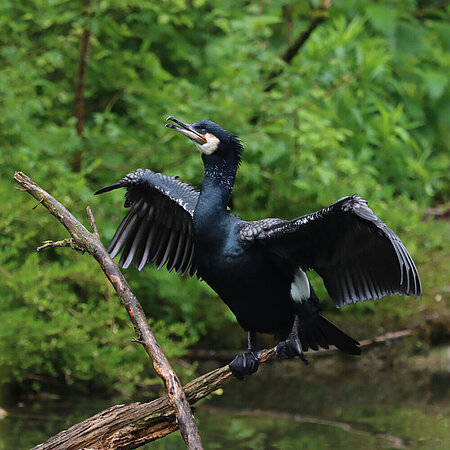Great Cormorant
Phalacrocorax carbo

- FamilyCormorants (Phalacrocoracidae)
- Weight2,5 – 4 kg
- HabitatInland waters and sea coasts
Sea ravens in the air
The black sea ravens are excellent swimmers. They capture fish by pressing their wings close to the body underwater, using their strong webbed feet for propulsion and their tail as a rudder. Great cormorants are equally impressive in the air and can reach speeds up to 80 km/h. However they are definitely not in their element on land.
Breeding plumage
Great cormorants have an almost entirely black plumage, except during the mating season. The Latin suffix “carbo”, meaning charcoal, in its scientific name is derived from its dark, non-breeding plumage. During the breeding season, the birds gain a nuptial plumage: the black body acquires an iridescent bluish or greenish sheen, the wings a bronze sheen, and white patches appear on the neck and thighs
Great cormorant breeding colonies are often quite crowded. Regions with a high food supply may include hundreds of thousands of breeding pairs.
Distribution
